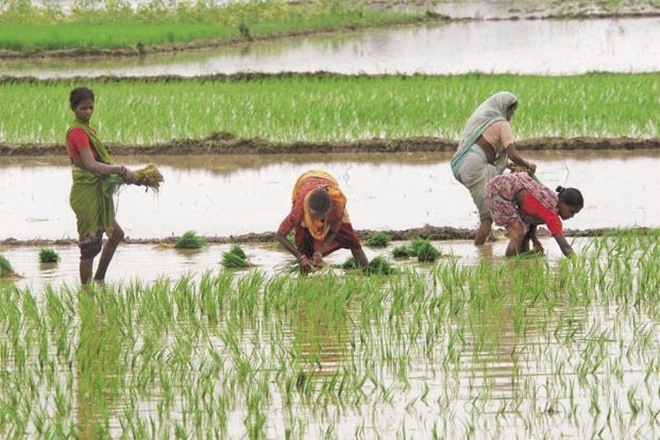Post demonetisation, agricultural lender Nabard has sanctioned an additional amount of Rs 20,000 crore to cooperative banks and societies, to provide farmers with better access to loans. Out of this additional sanction, an amount of Rs 17,774 crore has been disbursed to cooperative banks. This ensured availability of credit at concessional rate during the 2016-17 Rabi Season, Harsh Bhanwala, chairman, National Bank for Agriculture and Rural Development (Nabard) said on Tuesday.
“To address the cash flow problems of farmers due to demonetisation, interest for two months (November-December 2016) on short-term crop loans sanctioned and disbursed by Cooperative Banks during the Kharif season 2016 was waived. An amount of Rs 458.28 crore has been credited to the accounts of 154,07,473 farmers as on 31 March 2017,” he told reporters. Refinance for long-term loans, which is an established indicator of long-term capital formation, touched a new high at Rs 53,504 crore. Significantly, this vertical has recorded a CAGR of 35% over the last three years.
Bhanwala said that Nabard plans to raise Rs 50,000 crore in the current fiscal, up from Rs 40,000 crore it raised in 2016-17 as it aims to achieve the government’s Rs 10 lakh crore target lending for agriculture by the fiscal ending March 2018. The bank which also has a mandate to facilitate rural development will also lend for rural housing projects under ‘PM Awas Yojana’. Besides, borrowings from the market, Nabard also gets funds through Rural Infrastructure Development Fund or RIDF in which banks that have failed to meet their priority sector lending target in agriculture have to invest the shortfall and funds through budgetary support from the government. Nabard’s loans and advances rose 12.16% to Rs 3.08 lakh crore during the financial year ending March 2017 and reported 4.24% rise in net profit to Rs 2,631 crore. The bank has seen a rise in demand for agricultural loans even as banks have been struggling to see any loan demand in general. “There has been an uptick in ground level credit flow to agriculture by banks which has increased to 24% from 19% in the last three years mainly because of a push by the government and also demand for loans for allied activities like mechanisation and horticulture,” Bhanwala said.


